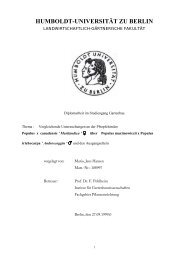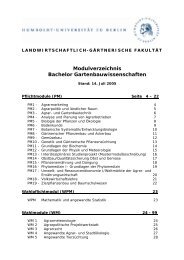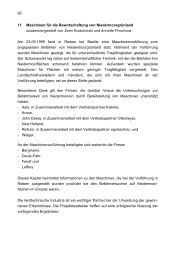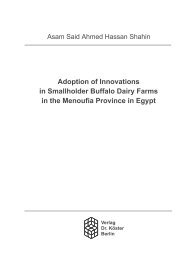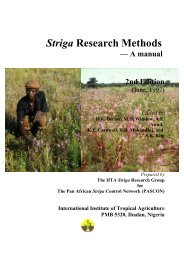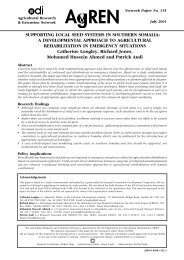Rice-Wheat Cropping Systems of the Indo-Gangetic Plain of India
Rice-Wheat Cropping Systems of the Indo-Gangetic Plain of India
Rice-Wheat Cropping Systems of the Indo-Gangetic Plain of India
Create successful ePaper yourself
Turn your PDF publications into a flip-book with our unique Google optimized e-Paper software.
plain districts <strong>of</strong> Western <strong>Plain</strong> Zone. This<br />
represents <strong>the</strong> zone <strong>of</strong> 3.0–3.5 t rice/ha<br />
(4.5–5.25 t paddy/ha) productivity. It is<br />
localized in <strong>the</strong> Tarai area <strong>of</strong> district<br />
Nainital (Udham Singh Nagar) and<br />
adjoining areas. Again, <strong>the</strong> high<br />
productivity zonation seems to be spreading<br />
towards <strong>the</strong> east, west and south in a semicircle<br />
as observed in Punjab. A similar<br />
trend <strong>of</strong> high productivity is also seen to be<br />
emerging in West Bengal where a high<br />
productivity zone <strong>of</strong> 2.5–3.0 t rice/ha (3.75–<br />
4.5 t paddy/ha) is spreading from district<br />
Barddhaman to towards <strong>the</strong> surrounding<br />
areas.<br />
The productivity <strong>of</strong> rice realized<br />
continues to be dismally low (less than 1.5–<br />
2.0 t rice/ha (2.25–3.0 t paddy/ha) over<br />
most <strong>of</strong> <strong>the</strong> rest <strong>of</strong> <strong>the</strong> Uttar Pradesh. The<br />
productivity tends to slump to still lower<br />
levels <strong>of</strong> less than 1.5 t/ha rice or 2.25 t/ha<br />
paddy in <strong>the</strong> north-eastern and northwestern<br />
zones. It seems that <strong>the</strong> advent <strong>of</strong><br />
“Green Revolution” has not made any<br />
impact here. The yield realization<br />
continues to be pegged down to pre-green<br />
revolution era at <strong>the</strong> low level <strong>of</strong> less than<br />
3 t ha paddy (2 t ha rice). This suggests<br />
that farmers have not yet started adopting<br />
<strong>the</strong> new high-input high-yield rice culture.<br />
Even though HYVs have been introduced<br />
and farmers educated about inputs, use <strong>of</strong><br />
fertilizers, herbicides and tractorization <strong>of</strong><br />
land for preparatory tillage on an extensive<br />
scale and mechanized management <strong>of</strong> rice<br />
and wheat (threshers/harvesters) remains<br />
scarce. Probable reasons for this may be<br />
many. Probably <strong>the</strong> Zamindari (large<br />
landowner) system, absence <strong>of</strong> active<br />
peasant farmers, and less than desired<br />
availability <strong>of</strong> technical, financial and<br />
extension support may be <strong>the</strong> major<br />
constraint. Many <strong>of</strong> <strong>the</strong> able bodied males<br />
and females move out from eastern Uttar<br />
Pradesh, leaving <strong>the</strong>ir lands to be managed<br />
by older people or children. Often times<br />
tenant farmers are engaged who have little<br />
interest in land development. But, in<br />
contrast, <strong>the</strong> low yield realization in <strong>the</strong><br />
western and central parts <strong>of</strong> Uttar Pradesh<br />
is ra<strong>the</strong>r an interesting case, in that, that<br />
little migration <strong>of</strong> labor takes place from<br />
<strong>the</strong>se areas. Fur<strong>the</strong>r intensified efforts to<br />
increase rice productivity in this area<br />
through a mix <strong>of</strong> appropriate policy changes,<br />
farmer education, and infrastructure<br />
development are obviously needed to make<br />
a break-through. In fact, this zone holds<br />
<strong>the</strong> potential <strong>of</strong> meeting <strong>the</strong> increased food<br />
needs <strong>of</strong> <strong>the</strong> future and ought to be given<br />
<strong>the</strong> active attention, it deserves.<br />
The productivity <strong>of</strong> rice in Bihar,<br />
ACR IV: Middle <strong>Gangetic</strong> <strong>Plain</strong> Region is<br />
particularly low. It is mostly less than 1.5 t/<br />
ha rice or 2.25 t/ha paddy over most <strong>of</strong> <strong>the</strong><br />
eastern Bihar. This region is highly floodprone<br />
(Fig. 9b), and flooding <strong>of</strong> lands over<br />
an extended period makes rice cultivation<br />
very risky. Thus, until and unless <strong>the</strong><br />
government in cooperation with <strong>the</strong> Royal<br />
Government <strong>of</strong> Nepal undertakes (i) largescale<br />
agr<strong>of</strong>orestry and aforestation programs<br />
in <strong>the</strong> Hills <strong>of</strong> <strong>the</strong> Himalayas, (ii)<br />
construction <strong>of</strong> appropriate dams, and (iii)<br />
appropriate steps to control water flows by<br />
canalization <strong>of</strong> river flows, rice productivity<br />
in this area is likely to remain low.<br />
However, rice productivity in <strong>the</strong> upper<br />
western Bihar (inclusive <strong>of</strong> both North-<br />
Eastern and South Bihar Alluvial <strong>Plain</strong><br />
Zones) which are not subjected to severe<br />
flooding [(as those obtained in <strong>the</strong> eastern<br />
Bihar) (Fig. 9b)] holds promise <strong>of</strong><br />
undertaking productivity improvement<br />
measures like harnessing <strong>of</strong> natural local<br />
water resources and adoption <strong>of</strong> modern<br />
high-input guided production techniques.<br />
Perhaps, <strong>the</strong> agriculture and rural<br />
environment obtained in this region<br />
continues to suffer from similar<br />
socioeconomic problems as described for<br />
eastern Uttar Pradesh. This coupled with<br />
25



